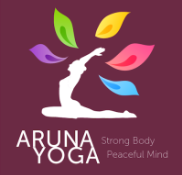Restorative Yoga: What is it and how can I teach it?
What is Restorative Yoga?
Restorative Yoga is a gentle, calming, and deeply restful practice designed to support the body and mind in releasing tension. Using props such as bolsters, blankets, blocks, and straps. Poses are held for longer periods, allowing the nervous system to settle and the body to melt into the props. Unlike dynamic yoga styles, restorative yoga is less about building strength or flexibility and more about creating an environment for rest, repair, and balance.
How can I teach Restorative Yoga?
As a yoga teacher you can become qualified to teach Restorative Yoga with Aruna Yoga’s 2 day Restorative Yoga Teacher Training or our 50hr Restorative Specialist Teacher Training. They are both internationally certified by Yoga Alliance Professionals.
Add more tools to your teaching toolkit - Become a Restorative Yoga Teacher
Why teach Restorative Yoga?
Restorative yoga is a gift to both teacher and student. In a world where many people are chronically stressed, constantly “on the go,” and rarely pausing, this practice provides a counterbalance. Teaching restorative yoga allows you to offer your community a much-needed space for rest and recovery. It also enriches your own teaching, opening new possibilities for private sessions, therapeutic classes, and workshops plus it gives you skills and tools to integrate into your public classes.
I taught Restorative Yoga every single Friday evening for about 7 years and it was my favourite class of the week. Teaching the class was such a relaxing, mindful start to the weekend. It was a gift for me and my students.
Some benefits of Restorative Yoga
Restorative yoga has wide-ranging benefits. Some of the most recognized include:
Better, deeper sleep: The number of students who have sent me a text the next morning about their incredible nights sleep, is testament to how amazing restorative yoga is for sleep.
Stress reduction: Activates the parasympathetic nervous system, calming the body’s stress response.
Improved sleep: Encourages deep relaxation, making it easier to fall and stay asleep.
Emotional support: Creates space for your students to process emotions they may be feeling or ignoring. This is not something we force but something that happens for some.
Supports recovery: Whether from illness, injury, or burnout by allowing the body to rest and regenerate.
Increased resilience: Regular practice helps build a foundation of calm and steadiness that carries into daily life.
My daughter finds Restorative Yoga a great alternative to meditation. She can’t sit still and just sitting down or even a walking meditation makes her more agitated than relaxed, but she enjoys restorative yoga. The movement that slows and guides her to relaxation rather than trying to go from movement to still (i.e. trying to sit and meditate).
What makes Embodied Restorative Yoga so Powerful
Restorative Yoga is primarily about the nervous system.
Taking time, giving and receiving support, using props, weight and covering encourages the body and nervous system to give way, and release. Another way to phrase this is to allow time for the body to move from the symptomatic to the parasympathetic state.
Then benefits of this shift are received by all the other systems within the body,
The Respiratory System
The Cardiovascular System
The Muscleker Skeletal Systems (particularly the Fasha)
The Immune System
The Digestive & Elimination Systems
The Reproductive System
Especially the Endocrine System and
The Nervous System
Teaching Restorative Yoga: What you need to know
Teaching restorative yoga is less about "doing" and more about "holding space." As a teacher, your role is to:
Understand that less is more.
Create a calm, nurturing environment (lighting, sound, and warmth all play a part).
Offer clear and simple instructions that guide students into comfort and ease - your students don’t need to be stressing about what you mean as they are trying to relax.
Use props thoughtfully to fully support the body so there’s no strain.
Hold the space.
Join Aruna Yoga’s Restorative Yoga Teacher Training grads and start sharing deep rest with the world
Aruna Yoga’s Restorative Yoga Teacher Training
We have two options for becoming a Restorative Yoga Teacher:
Restorative Yoga Teacher Training (2 days)
50hr Specialist in Restorative Yoga (4 days)
Aruna Yoga Academy is a centre of excellence for Yoga Teacher Training. All of our Yoga Teacher Trainers are highly skilled and highly experienced in their areas. Our Restorative Yoga Teacher Training is designed for real integration and real teaching so you will leave confident and knowledgeable - ready to share what you have learned with your students (and maybe integrate it into your own life and practise too!)


